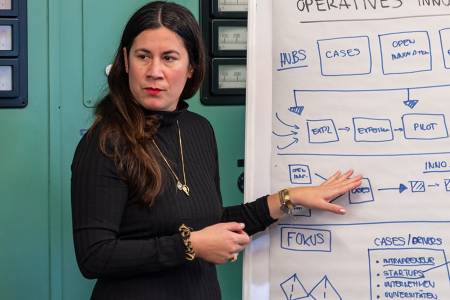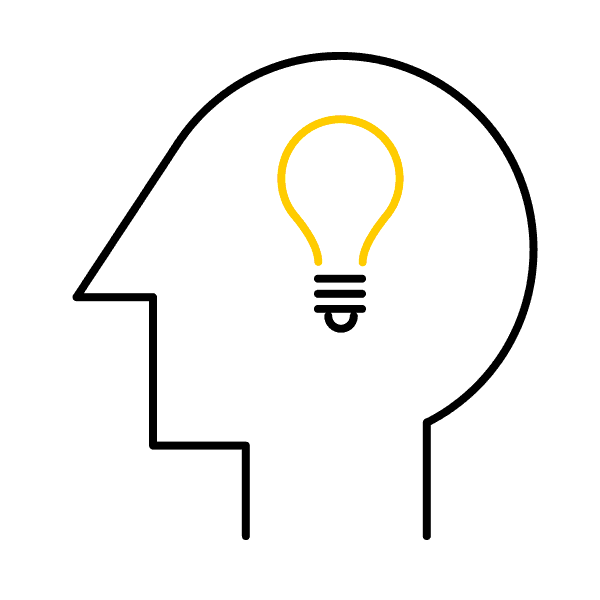Being open and inquisitive, thinking outside the box, experimenting, failing as early as possible and learning from it: design thinking is a mindset that takes everyone involved on an exciting journey into the unknown as they try to come up with new ideas. For Alice Dal Fuoco from VNTR | Innovation & Venturing by PostFinance, design thinking is pretty much the only type of thinking she knows now. Being a designer, this approach was something that was already ingrained in her back in her student days, and at VNTR, it is part of the culture. Here are our questions for her:
You are here:
Did you know? This is design thinking
Design thinking can help you come up with brand new ideas. But what do you need to bear in mind to ensure this exciting approach pays dividends (see the video), and how exactly does design thinking work?
What is design thinking?
An approach to creativity that was taught in the 1980s at Stanford University, and which was applied by David M. Kelley, founder of the American agency IDEO, to the business context. Design thinking enables you to think outside the box. It helps to see things in a different light in the process, but at the same time, it is important to ensure the needs of the person and the user take center stage. Design thinking involves people from different fields working together in an environment that requires creativity. In a nutshell, it’s about identifying a problem as a team by studying and observing the target group. You can then draw on this to come up with ideas that can be tested multiple times using simple prototypes. It is important to keep questioning these ideas, and to be able to abandon them as well. The ultimate objective is to fail as early and as often as possible in order to be successful quickly.
Understand and observe (empathize)
The first thing to do is to try and gain as deep an understanding of the problem at hand as possible – forgetting about solutions for the time being – in order to know exactly what problem you’re dealing with. What’s the issue for the target group? What problem needs solving? To this end, we conduct intensive research and observe the customer using a certain product, we conduct interviews and we strive to truly understand the customer’s requirements. We focus fully on the customer.
Define a stance (define)
We condense the information and observations we obtain and create “ideal customers” in the form of “personas”, which are basically fictitious characters with a profile made up of preferences, unique characteristics and needs. During the following phases, we keep referring back to them and ask ourselves: “Is this something our persona would like?”
Come up with ideas (ideate)
To come up with ideas, we examine our problem from every possible angle. Everyone has their own point of view to bring to the table. Using creativity techniques, we can break away from old ways of thinking and venture into the unknown. Everything is possible, and we shouldn’t judge.
Prototyping (prototype)
We turn initial ideas into reality using prototypes. A prototype can be practically anything: a mock-up, a role play or even just a quick sketch.
Testing (test)
Now we come to testing our prototypes. We might start by doing this with colleagues, and then move onto customer focus groups. We wait for the test results to come in so we can gradually tweak our prototype, or we might end up scrapping the idea entirely. After all, as we’ve already said: only those people who fail early and often have truly used and applied design thinking.
When is it a good idea to apply design thinking?
Whether in HR, IT, product management or in the innovation team, in banking, industry or construction, the applications of design thinking are practically endless. It is always well worth trying design thinking if you really want to come up with new ideas, or if you want a better understanding of complex situations and customer needs.
About Alice Dal Fuoco

Alice Dal Fuoco is an innovative manager who works at VNTR | Innovation & Venturing by PostFinance.
